Hey guys, let’s share a coffee get down to defining the R.C Tradition in more detail.
As viewers are aware I am in the process of Reviewing all the Rosicrucian Orders. Nice as it would be to just go ahead and hammer out reviews I still need to better define the Rosicrucian Tradition first.
If I do the reviews without first having defined the R.C… Then all the grumpy bums will Roll Out and Troll Out.
It’s a lot of work. Let’s hope I didn’t bite off more than I can chew!
Today’s examination of the Rosicrucian Tradition exposes more details on Pansophy.
I am going to use this word in my reviews because it firmly belongs to the original Rosicrucian tradition. In my reviews I am going to be looking for any signs of its presence in the teachings of the Order under question. Orders that have any elements of Pansophy present will receive higher scores.
Initially I conducted my own survey and it was surprising to learn that most of the leaders of various R.C Orders didn’t have any idea as to what Pansophy means. In fact, a few got grumpy about it.
Glaringly and at odds we saw in my previous post how important it is. And if so many Rosicrucian Orders have lost track of this teaching… well talk about driving your wagon with one wheel missing!
So what the hell is up?
‘Pansophy is synonymous with the word Rosicrucian’ is one of my mentor’s affirmations, who took the time to explain the history to me in Germany under the Meyrink tradition.
(At first though, let us start out by clarifying that the Pansophy to which I refer does not relate to the later German Orders who used the term Pansophia/Pansophy. In Germany there are three phases of Rosicrucian work. The period leading up to approximately the mid 1800’s is called the Alten-Rosenkreuzer and the period after is called ‘Neu Rosenkreuzer’ meaning Old System and New System.
The Pansophic Movement of Frater Recnartus, which included the German OTO, and also the so-called ‘Pansophical Lodge of the Lightseeking Brethren of the Orient-Berlin’ founded by Eugene Grosche (aka Gregor Gregorius, 1888-1964) of the controversial ‘Fraternitas Saturni’ have nothing to do with the kind of Pansophy I am relating. The form of Pansophy here described dates back to the original movement, moves behind the Rosicrucian manifestos and its writers of the early seventeenth century.)
Comenius and his Pansophic Answer to the Rosicrucian Vision
As we have seen the forth Rosicrucian manifesto names Pansophy as their true philosophy as early as the year 1618. A search on Wikipedia only reveals that John Amos Comenius ‘appears’ to be responsible for the term, publishing a book titled Pansophia through his friend Samuel Hartlib in English in 1639.
As far as Wikipedia is concerned Pansophy is just an education system for school kids.
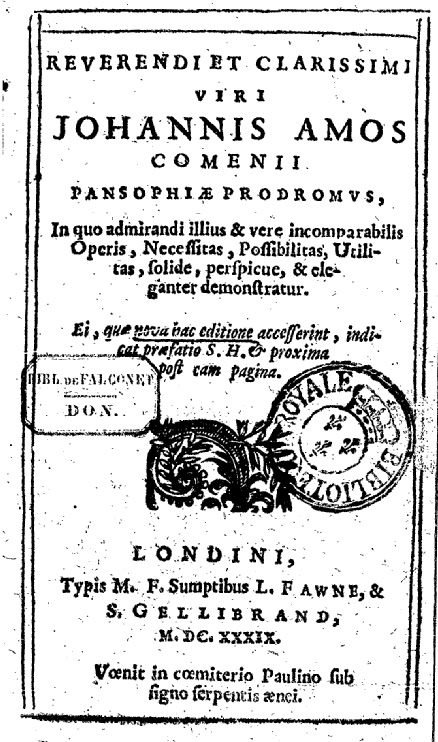 As it turns out, their wiki article is terribly incomplete.
As it turns out, their wiki article is terribly incomplete.
Several important things occur here surrounding Comenius. Firstly his publisher Samuel Hartlib is important in that many letters surrounding his circle refer to an ‘Invisible College’ echoing the existence of an actual Rosicrucian Brotherhood, writing ‘Our Invisible Brotherhood.’ And, as well, Comenius himself attested that his work was influenced by Johan Valentine Andrea, the central figure behind the writing of the Rosicrucian manifestos of the early 1600’s. Several letters between the two provide fascinating evidence of a real group of highly evolved Rosicrucian thinkers. It appears there was no Order in the monastic sense as described in the Fama Fraternitatis. But there definitely WAS a real network running from Dee, to Jacob Boehme through von Frankenburg, and from him also to Andrea and Comenius. This network represents an inner tie between spiritual brothers.
Much of what we have seen so far concerning Rosicrucian ideas actually stems from Italy.
Every instance so far shows us that the Neo-Platonic thinkers, the Hermetic mystics of Renaissance Italy had their work copied and absorbed into a German-proto-Rosicrucian adaption.
The Fama Fraternitatis is a response to an Italian work titled ‘the Reformation of the Whole Wide World by Order of Apollo.’ The Rosicrucian Tomb of Christian Rosenkreuz is an adaption of Campanella’s Italian work, detailing a Holy City of the Sun, and answers the Hermetic talismanic ideas related by Bruno.
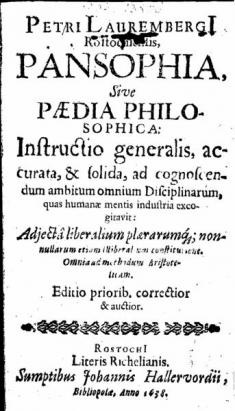 In keeping with this adoptive style seen thus far we also find that Comenius in fact borrowed his Pansophy ideas from earlier Italian works.
In keeping with this adoptive style seen thus far we also find that Comenius in fact borrowed his Pansophy ideas from earlier Italian works.
Comenius borrowed the term Pansophy from Peter Laurembergi, who had already written ‘Pansophia, Sive Paedia’ which was an encyclopedia of nature, science and religious thought, uniting all into a system of Universal Wisdom. Upon reading it Comenius saw it was based upon the universal-ideas of Aristotle and realized the potential of creating a Christianized version of the work.
In fact I am starting to think that very little of what the Rosicrucians did was independent of the Italians.
Comenius took the idea of Pansophy and applied the term not only to a Universal Wisdom (A Latinized and Christianized form of the Cabala) but he also understood that in order to grasp the full magnitude of its universal all-encompassing vision, people would have to begin learning it from childhood.
It actually embodied the height of all thinking, wisdom and philosophy achieved up until that time.
We must be careful in our use of Pansophy however, because Comenius was not the only one to use it, and he states it rest also upon earlier traditions, which he names. His version establishes a universal framework that brings together all knowledge into one consistent scheme. He declares it is “the unification of all scientific, philosophical, political, and religious knowledge into one all-embracing, harmonious world view.” And here, my friends, we see for the first time the difference between the Kabbalah of the old system (from which out of the R.C would grow) and the Cabala of the new system.
The Pansophy of the Rosicrucians is not only Cabala. It is a mystical knowledge applied to all aspects of life, in that not only does one undertake mysticism, but the Light of the vision attained by mysticism is dispensed to all fellow human beings. This Light is then shed upon science, politics, on the arts, on law, on the very course of all human and natural interaction. In short this is the ‘Light in Extension’ spoken of in the mysteries, where the higher rays of the illuminated may shine upon every aspect of civil living.
Comenius supplied a system that could implement his vision of Pansophy on many levels. He developed revolutionary new educational reforms for teaching children. Because he was not one to think small thoughts, his utopian vision included a universal language, the reunification of the church, global spiritual regeneration, and an enlightened one-world government. The intended result was to be nothing less than a pan-cultural renewal of world civilization in the rays of the solar Christ.
It is here that I believe the majority of ‘Rosicrucian teachings’ are entirely missing the point.
And here is why.
All too often the assumed view the Rosicrucian Order is that it solely acts as a mystical esoteric society, and this is where they are all dead wrong. Unfortunately today the various Rosicrucian bodies are mostly organizations teaching occult lessons to the exclusion of the ideal of social regeneration.
Most R.C Order may espouse ideas concerning higher universal laws, mystical secrets, and many place a lot of emphasis on the idea that the Rosicrucians must hold some sort of ancient wisdom, possibly from Egypt, as it was passed down through secret societies, for the select few. The ‘glamour of the mystery’ surrounding these elements of Order has unfortunately caused the majority of people to entirely miss the point. Mysticism is only a part of it. That mysticism needs to provide a worldly benefit.
If anyone here has really paid attention to the manifestos the Order, as it was conceived in Europe, it clearly was not only a mystical Order. And yet in contrast today’s Orders are a buffet of occult teachings.
The occult-mystical aspect is only one side of the tradition. Most Rosicrucians have lost the other fifty percent of this mystery, which is the concern for worldly Reformation.
At first glance this might all seem very much in keeping with the original manifestos of the Rosicrucians; the manifestos certainly name alchemy, magic, and Cabala as their arts. But people, being as self-centered as they are today, probably prefer to pursue these things because they deal with the Self.
But the Fama like the other manifestos, especially the call by Apollo to his Sages commanding they carry out a ‘Reformation of the Whole Wide World’ are quite explicit. They demand a call to action, for social reform, for spiritual reform, for ousting the Pope, for regenerating the minds of all people, for re-instilling the ancient virtues that shall help us rise to a Golden Age once again. Pansophy here becomes the byword that encapsulates their original concern for cultural regeneration.
So if you do call yourself a Rosicrucian, it may be time to start paying attention to the world’s condition.
Now, if you are wondering how on earth Pansophy, as described by Comenius, becomes a byword for cultural regeneration, rather than just an education system, well allow me to explain.
At the time of the writings of the manifestos Pansophy stood for ‘Christian Utopianism’ in general.
Comenius’ ideas were not the only version of Pansophy, but rather if you place yourself in their shoes and consider their predicament as high thinkers. In order for them to kick-start this cultural regeneration into motion, as according to their utopian vision for all humanity, all people across all levels of society first had to be mentality and spiritual liberated and made enlightened.
And this could only be achieved through education.
Comenius now focused his attention upon the youths of Europe to fulfill the true Rosicrucian vision. His first book is titled ‘On the Reformation of Schooling’ which clearly shows that he believed that in order to reform the world you had catch them while they were fresh and ready to learn, until they were at last ready for an ‘adult comprehension of the divine order of things’ as he put it.
Here are his three main tenets:
- God’s plan of creation was orderly and human knowledge of the world should also be orderly.
- It is possible and desirable for human beings to possess this knowledge of an ordered creation in a systematic fashion and to use this knowledge to create orderliness in their personal lives and social behavior.
- Ordered knowledge would stimulate a love of wisdom that, transcending national boundaries and sectarian divisions, would help humankind to create an orderly and peaceful social order. In such a world order, persons would be free to worship their Creator according to their own liturgical forms but would also engage in an ecumenical dialogue. By reaffirming common humane beliefs and values, Pansophism as a form of international education would enable human beings to overcome the accidental differences of nationality and language that separated them. Although human life was varied in its responses to climate and geography, the themes of a common Creator, a common humanity, and a common knowledge would transcend these differences to create a perspective that would restore order to a contentious people.
Comenius himself though considered his work an extension of Francis Bacons’ own work, both on education and on establishing a solar society. In every sense Comenius saw his mission as the furthering of the Bacons’ attempt to unify all human knowledge and create a high level civilization.
It is here where we learn that Pansophy in fact predates Comenius.
The Pansophy Before, and its Utopian Vision
Where Wikipedia and most sources fail to deliver is in revealing the Pansophy before Comenius, and this is why, up until this post, many have forgotten this important element of Rosicrucian teachings.
Pansophy had existed long before Comenius, even before the Rosicrucians.
In Europe mystics had begun to see that there were two sources of divine revelation. One was the scripture and the other was the Book of Nature. According to ‘Utopian Thought in the Western World’ we read that ‘Pansophia entailed a virtual amalgamation of the two spiritual corps, the scientist and the ministers of religion, into a single body, putting an end to the conflict before it assumed disastrous proportions.’ This book is by Frank E. Manual and quite useful in explaining the full story.
He adds:
“This utopia of perfected Christian society assumed widely diversified shapes in a broad spectrum of writers. Under the Pansophic canopy are included the works of Bruno and Campanella, the Englishman Francis Bacon and John Wilkins, the Rhinelanders Alsted, Besold and Andrea, the Moravian Comenius and the expatriate Comenians in London, Hartlib and Dury.”
The reason he says this of course is because Comenius himself actually listed the three main treatises of Pansophy. He saw his own work as a realization, and these three as the source materials.
The Three True Treatises of Pansophy
According to Comenius the three main treatises which are truly Pansophic are:
- City of the Sun, by Tomas Campanella 1602
- New Atlantis, by Francis Bacon 1626
- Christianopolis, by Johan Valentine Andrea 1619
Each of these treatises featured utopian societies. In each case a society is described as having a solar temple, a Solomon temple or temple of Apollo at the center. The architecture is an important feature in these societies and their layout strongly emphasizes how the cities are living talismans, in that the walls themselves reveal a language and provide inspiration and teachings to the inhabitants.
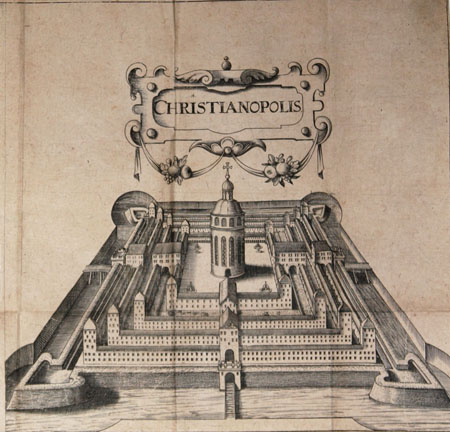 With their temple centers the cities highlight geometric harmony, along with patterns throughout the city and its societies. The City of the Sun was circular, Christianopolis was square. Khunraths’ version had seven sides. In each case the architecture of the cities express an individual and urban philosophy of harmony amongst fellow human beings.
With their temple centers the cities highlight geometric harmony, along with patterns throughout the city and its societies. The City of the Sun was circular, Christianopolis was square. Khunraths’ version had seven sides. In each case the architecture of the cities express an individual and urban philosophy of harmony amongst fellow human beings.
Obviously the most important connection to the Rosicrucian mysteries is Christianopolis because its author Andrea was the backbone behind the Rosicrucian manifestos. In his Fama Fraternitatis he described a Christian brotherhood, but this later work, published in 1619 is his attempt to promote a more concrete Christian brotherhood, a complete community housed in a fortified ideal city of God.
But, lest we forget, Campanella’s own friend, translator and protégé Tobias Adami was also a member of Andreas’ own circle, the Tubingen Circle, which is also responsible for writing the manifestos.
In addition to these three treatises however, several university papers have also concluded that in fact Pansophy begins with a person named Francis di Giorgio Martini (1439 – 1501).
It was he who created the notion of a city of ideal proportions. As we have seen in my earlier post Bruno, like di Giorgio also was aware that in the prophecy of Hermes the gods shall someday return and would be installed into a city. The ideal city was a geometric figure calling their return.
What then is the Rosicrucian Tradition?
The question now is, as a Rosicrucian seeker, do you remain fixated upon the idea that there are only three manifestos: the Fama, the Confession, and the Wedding?
Or, if you have followed these posts, perhaps you also have taken on the view that ‘The Reformation of the Whole Wide World by Order of Apollo’ may in fact be the first of the manifestos. And further, you might even now accept that the ‘Mirror of Wisdom of the Rosy Cross’ is indeed the final manifesto, and if so, this will then lead you to conclude that Pansophy is indeed a part of the Rosicrucian tradition.
Or…. Is it the other way around?
Think about it.
Rosicrucian Pansophy as described by Comenius actually predates the three main manifestos. And in fact, Pansophy is described in the possible forth manifesto, the Mirror of Wisdom. This would actually suggest that Pansophy is in fact broader than the Rosicrucian tradition, and that the Rosicrucian tradition is a part of Pansophy, and not the other way around. My own mentor in Germany certainly saw it that way.
This post might open a few doors of study, maybe even a few debates.
Only one more post to come on the idea of Pansophy, covering its mystical side before I set into stone the landmarks for completing the Reviews of the Rosicrucian Orders. My essential conclusion here folks is that really the Rosicrucian tradition is more than just a mystical occult path. It is more than exploring yourself, and undertaking mystical exercises for personal spiritual regeneration. If we follow the true vision of our Rosicrucian forefathers it is also a vision for the regeneration of all humanity.
That we may live in peace. That we may live in the presence of IAO-Nous.
Time for a Mocha chino 🙂
Your friend on the path,
Samuel Robinson
Founder of Pansophers.

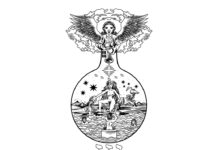
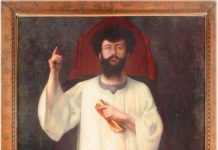
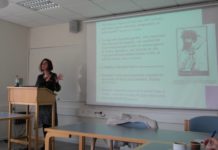







Not only Cabala, but « Light in Extension » !
Thank you so much for this article.
I don’t know if you mean that the word Pansophy was already coined by the Italian « universalists », but Peter Lamberg was a German.
Thank you for the wonderful article, it helps provide meaningful context to my Rosicrucian studies. It is indeed important to remember that the transformation of the microcosm should always be viewed in relation to the state and potential of the macrocosm. I recently wrote a short paper titled “The Self, The Other, And The Natural: Fostering Harmony From The Ground Up” which has yet to be published, but relates the importance of and basic methods for promoting harmony between the self and the natural world. The paper is not wholly based on Western concepts, but I mention it because it comes to a similar conclusion regarding the importance of using internal transformation to advance humanity’s potential to find increased harmony within itself and the natural world.